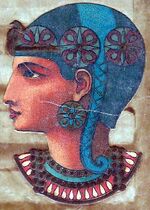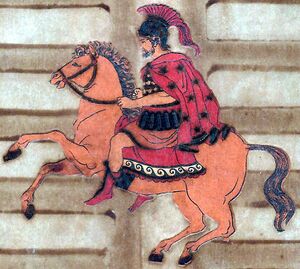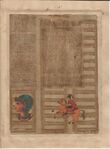“Isis Unveiled”
...

Elementary Spirits
Sir,—In a letter which you were good enough to insert on the 14th January last, I threw out a suggestion that the moral contradictions of the human character, and the moral conflict in the human will, might be due to the fact that our organism is the synthesis of spiritual elements, which, in their free and separate activity, are manifested in the lower forms of life. “Every element of the human character, every trait of human intellect, is represented and symbolised by instincts and aptitudes in the lower orders of animals.... In the conflict of these heterogeneous elements, in the struggle between these opposing tendencies, brought together in a single organism, consists the dramatic interest of man’s moral life, and, again, as one or other of them predominates in the individual, the strife, the progress and development of societies.”
And reading the other day, in Monsell’s Gnostic Heresies, an account of Basilides, I came across the following passage: “Basilides and his followers, according to Clement, called the passions of men προςαρτήματα, or appendages, and regarded them as spirits appended to the rational soul in consequence of a, certain disturbance and confusion of principles; with these were connected other spurious spirits of different natures, such as those of the wolf, the ape, the lion, or the goat, or even of plants and minerals, which form desires in the soul of a similar kind.’’ It seems to me that this idea has an almost necessary place in any system of spiritual evolution, and is also significant of the high vocation and destiny of man. That man was created to rule over nature and her productions is a mere rhetorical commonplace in its obvious and external meaning, but perhaps a very profound truth in its spiritual signification. To take up the discordant elements of nature, to suborn and subordinate them to and in harmony with a higher principle, is not this just the spiritual work of man? And if he does this work, may he not be called with some propriety the redeemer of nature?
The figurative language by which we express the conflict within us when the sovereign will has abdicated, or is in abeyance, represents us as passive, without unity or individuality, the battle ground of opposing forces. We are “distracted,” “torn asunder,” “impelled,” “restrained,” &c. It would be as correct to say that our passions are conscious in us as that we are conscious of our passions, except that for “passions” in the first expression, it would be necessary to substitute the name of the living active spirit that is asserting itself in our organisms. Are we so sure of our individuality? Schopenhauer and Coleridge* placed this in the will as the essential principle of personality. According to current phraseology and ideas, “I” am or have a single will, actuated by motives. Now, motive, or “desire,” is simply inchoate will. It gathers force, and is said to be irresistible, and to determine will. I would rather say that it gathers force, and becomes will. We give the complex of these desires the name of “human nature,” not recognising them as living forces, once, perhaps, conscious and independent lords of simpler organisms than ours. So long as our individuality only manifests itself in giving expression to these forces, what is it? A self made up of them, a desire for the gratification of all desires, a will to recreate them all in potency and act! Perhaps the “enthusiasts” of all pure religions and all true philosophies may have been right, and it is only when man has made a sacrificial holocaust of his “nature” that he will find himself.
* See Green’s Spiritual Philosophy, which is a developed exposition of Coleridge’s views.

Editor's notes
Sources
-
London Spiritualist, No. 187, March 24, 1876, pp. 139-40

